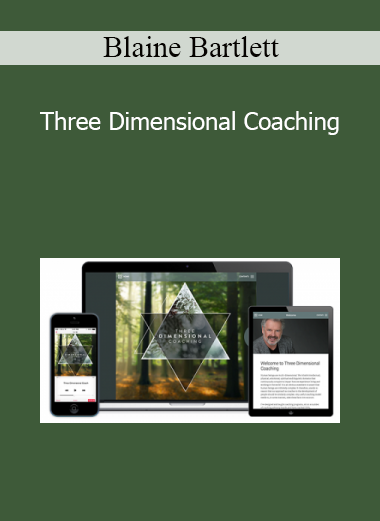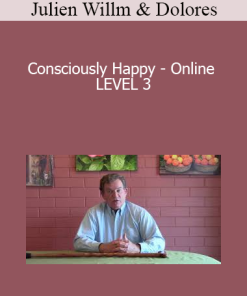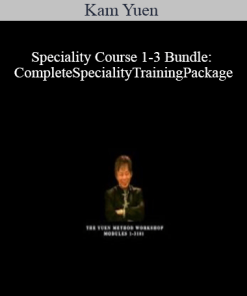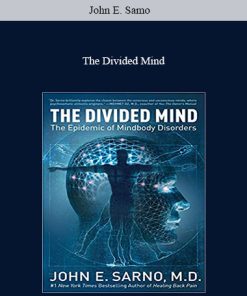-
×
 Carol Tuttle – Soulprint Healing For Affluence
1 × $52
Carol Tuttle – Soulprint Healing For Affluence
1 × $52 -
×
 Erin Davis, Jonathan Lowy & Patrick O. Dunphy - Advanced Trial Tactics and Strategies for Negligent Gun Sale Cases
1 × $25
Erin Davis, Jonathan Lowy & Patrick O. Dunphy - Advanced Trial Tactics and Strategies for Negligent Gun Sale Cases
1 × $25 -
×
 Larry Williams - Annual Forecast Report 2025
1 × $19
Larry Williams - Annual Forecast Report 2025
1 × $19 -
×
 Jeff Baxter – Endless Traffic Mastery
1 × $42
Jeff Baxter – Endless Traffic Mastery
1 × $42 -
×
 Dan Johnston – Landing Page Fundamentals, Buyer Psychology, and Conversions
1 × $25
Dan Johnston – Landing Page Fundamentals, Buyer Psychology, and Conversions
1 × $25 -
×
 Jason Henderson – “Email Response Warrior + Email Inbox Warrior”
1 × $80
Jason Henderson – “Email Response Warrior + Email Inbox Warrior”
1 × $80
Blaine Bartlett – Three Dimensional Coaching
$445 Original price was: $445.$62Current price is: $62.
Delivery Method: Digital download is available after purchase, and you can access your courses anytime, anywhere, using a computer, tablet, or smartphone.
Blaine Bartlett – Three Dimensional Coaching
For Blaine Bartlett – Three Dimensional Coaching
In this self-paced home study course, you’ll:
01 Learn To Create A Client-Led Process
You’ll learn to create a process that is client-led, not coach-directed, so that you form compassionate partnership and synergy… without getting trapped in psychotherapy or healing sessions.
02 Learn The Holistic Approach Of Three Dimensional Coaching
You’ll learn the holistic approach by exploring three of the most influential coaching models existing today — The Seasons Model, The Performance Focus Model and The Somatic Coaching Model.
03 Learn How To Be A Leader
You’ll learn how to be a leader… but you’ll lead from behind. Your place is to become that voice in the client’s/team member’s head that they can’t ignore — not because the voice knows the answers, but because it keeps asking questions that compel movement.
04 Learn To Create Coaching Environment
You’ll learn to focus on excellence instead of perfection, because it’s excellence that keeps the action moving forward; You’ll discover how to create an environment for the client to live into their outcome rather than live up to an arbitrary standard of what that outcome should be.
05 Learn To Empower Your Clients
You’ll learn to provide clients with a greater capacity to produce results and a greater confidence in their ability to do so. Your clients will not leave coaching with a perception that they need to rely on a coach in order to produce similar results in the future.
06 Learn Three Phases Of A Coaching Interaction
You’ll learn how to execute three essential phases of a coaching interaction for ongoing impact.
1. Defining a relevant context for the coaching.
2. Jointly developing a structure that allows for the coaching to unfold.
3. Executing within this structure.
07 Learn To Support Your Clients’ Journey
You’ll learn how to support your client on their quest, based on the concept of the classic hero’s journey…
Course Information
What you will get in the self-paced home study course, Three Dimensional Coaching
01
Three Dimensional Coaching e-book (PDF)
Blaine’s second book, Three Dimensional Coaching was published in 2013 and translated into Chinese and Japanese in 2015. Blaine outlines the way in which three fundamental coaching models are integrated into our work with clients. With numerous practical examples, the book is a wonderful and easy to use resource for seasoned and beginning coaches.
(Interesting fact: Blaine’s first book, Discover Your Inner Strength is an anthology collaboration with authors Stephen Covey, Ken Blanchard and Brian Tracy.)
02
Online Home Study Course (9 hours)
Dive into eight audio chapters with a keynote presentation — extension of the book (of the same title), stuffed with case studies and practical solutions.
Introduction: The Context
Let’s start with the basics. We’ll talk about client’s “story” and its three dimensions. About the traditional life-success model… and why it’s a trap. Finally, we’ll dive into concepts of transformation and mindfulness — and what’s their place in the coaching practice.
Chapter 1: What Is Coaching
The world today is moving and changing too fast for our legacy models of leadership and followership to sustain our organizations a — or us. Our worlds are becoming increasingly multidimensional and interrelated. As a consequence, many who have managed to segregate parts of themselves into a work persona, a social persona, a family persona and so on, are feeling increasingly ill-equipped to cope.
The experience becomes increasingly like trying to catch a ball with only one eye open — because closing one eye eliminates your depth perception, it’s almost impossible to do with any consistency. Coaching is a process designed to metaphorically open both eyes and bring depth to life. In this chapter you’ll learn more about coaching’s place, types of coaching applications and your role in the coaching process. Last, but not least — you’ll learn why PASSION (and what we mean by that) is critical in the coaching process.
Chapter 2: Three Dimensional Coaching
This is the juicy stuff — here you’ll discover how to access your client’s “story” through the major coaching models and how they build the Three Dimensional Coaching™ Model. You’ll start with The Seasons Model — with emphasis on The Cycle of Renewal.
Then, you’ll proceed to The Performance Focus Coaching Model — with emphasis on the core coaching skills (AIRAD), the process of creating the coaching environment/climate, the premise of possibility AND coaching conversation. Finally, you’ll move to The Somatic Coaching Model — with emphasis on moving and engaging techniques, “ground of being”, methods for requests and declines, contraction and expansion… and more! Yes, this chapter is action-packed.
Chapter 3: The Coaching Conversation
To lead a meaningful and powerful Coaching Conversation, you’ll have to learn about Bodhimanda – The Place of Awakening. Bodhimanda is a Sanskrit word that means, literally, a place where we come together to wake up. It’s from this concept that the idea of a dojo—a place of practice — was born. All martial artists practice in a dojo. It’s a place to be a learner; it’s a place to practice to develop mastery; it’s a place that connects the “artist” to the ideal of the particular martial art being practiced. The notion that we are waking up as we practice makes a dojo a special place.
You’ll also learn the CFEEB (Center, Face, Extend, Enter and Blend) technique and its special guided meditation.
Chapter 4: The Meaning Field
All that we do is governed by the meaning we have assigned and are assigning to the events in our lives. This simple statement is profound in its impact on the coaching process. The not so simple implication of the statement is that everything your client is doing and feeling involves his or her, often unconscious, choice. The meaning of anything is assigned or chosen by the client and does not inherently exist.
This chapter will explore the ways in which the coach and client will together discover the subtle decisions the client makes and has made… what influences these decisions, and how the client can change it. You’ll learn about concepts such as: “Mood and meaning”, “Leading from behind”, “The Nature of purpose” and “The power of vision”.
Chapter 5: The Challenges
What are the challenges for the manager/coach? How does the manager/coach advocate her/his need for a shift or change on the part of her client when “true” coaching is a client-led process? What is a “shape”, and how do you build it?
Learn how to allow the future to “find” your client and the center to “find” you. Finally, we’ll dive deeper into concept of Enmeshment (the consequence of losing the perspective that, in the coaching transaction, you are a unique individual that is acting out a role). We’ll also discuss what are its dangers and how to move beyond it.
Chapter 6: Designing The Future
Although it may seem so for many people, the future is not an accident waiting to happen. Frustratingly for many, however, the future cannot be guaranteed. But it can be designed. The wondrous thing about design is that the concept lends itself to flexibility. When designing the future with your client, you’ll help them keep their focus on function rather than form; on the experience of success, rather than symbols of that success. You’ll design to include problems not to avoid them.
By designing your future, you leverage the foundational activity of leadership (creating vision) and you put yourself in position to lead your life rather, than be at effect of the vicissitudes of life. You’ll also learn the rules of dealing with resistance (though the Contraction and Expansion technique) as well as why, instead of aiming for perfection, you should target excellence.
Chapter 7: Coaching Tools
Here you’ll explore some of the most effective and powerful coaching tools in the industry. Blaine prepared for you a toolkit of suggested meditations, Vision and Values Clarification Tools, Lifeline, personal vision exercises, “Five Other Lives” exercise, discovering your calling, Personal Management Interview (PMI). You’ll also receive a sample of a coaching contract to work with in the future.
03
Sample Tools & Worksheets (PDF)
Tools, techniques and exercises mentioned in the course and the book are edited and put together for your own and your clients’ use. You can download them, print them out and share with your clients.
The worksheets include:
- Vision and Values Clarification Tools
- Five Other Lives
- Discovering Your Calling
- Personal Management Interview (PMI)
- Sample Coaching Contract
- Suggested Meditations
Be the first to review “Blaine Bartlett – Three Dimensional Coaching” Cancel reply
Related products
Sale!
Medical & Health
Rated 4.4 out of 5
Sale!
Medical & Health
Rated 4.9 out of 5
Sale!
Medical & Health
Sale!
Medical & Health
Sale!
Sports & Fitness
Sale!
Rated 3.23 out of 5
Sale!
Everything Else
Rated 5 out of 5
Sale!
Medical & Health













15 reviews for Blaine Bartlett – Three Dimensional Coaching
There are no reviews yet.